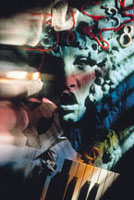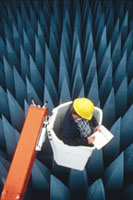Odd Couplings
Lou Jones' Surreal Moments
About a year ago I was talking
to commercial and industrial photographer Lou Jones about the "personality"
of a photograph, and how the photographer's point of view is absolutely
necessary in order to make images that are more than merely record shots.
During the conversation Lou talked about photographs in which, he said,
"the subject matter may be quite normal, even pedestrian, but
interpreting the idea in creative, unique, or even odd ways makes for
a powerful image." "In the beginning of my career," Lou Jones says, "it wasn't as if I were trying to do anything remotely like that--to take pictures with odd or quirky angles, strange combinations of things, or unusual compositions. But as my career progressed, I became less and less fond of the straight shot of a subject and more interested in the environment of the subject. Then a writer saw my work and said that some of it was `surreal.' I had never looked at it that way before. `Surreal' had always meant sort of Dali-esque--you know, molten clocks and a platypus coming out of the sand." |
|||
While there weren't literally
any melting clocks in Jones' work, there were plenty of surrealism's
odd, often unnatural juxtapositions, incongruities, and dreamlike references. |
|||
But for this approach to work
in the world of commercial photography, "you've got to have
good clients," Jones says. "Most, unfortunately, tend to like
to see things they've seen before. Especially in today's economy,
they tend not to take as many chances. |
|||
Regardless of the type of photograph
being produced--commercial or personal, surreal or straightforward--Jones
reflects an attitude pros and amateurs can easily share: never settle.
Where some photographers stop at the first view, which may indeed be a
perfectly fine photograph, the really special happens when you strive
to make it happen. |





































